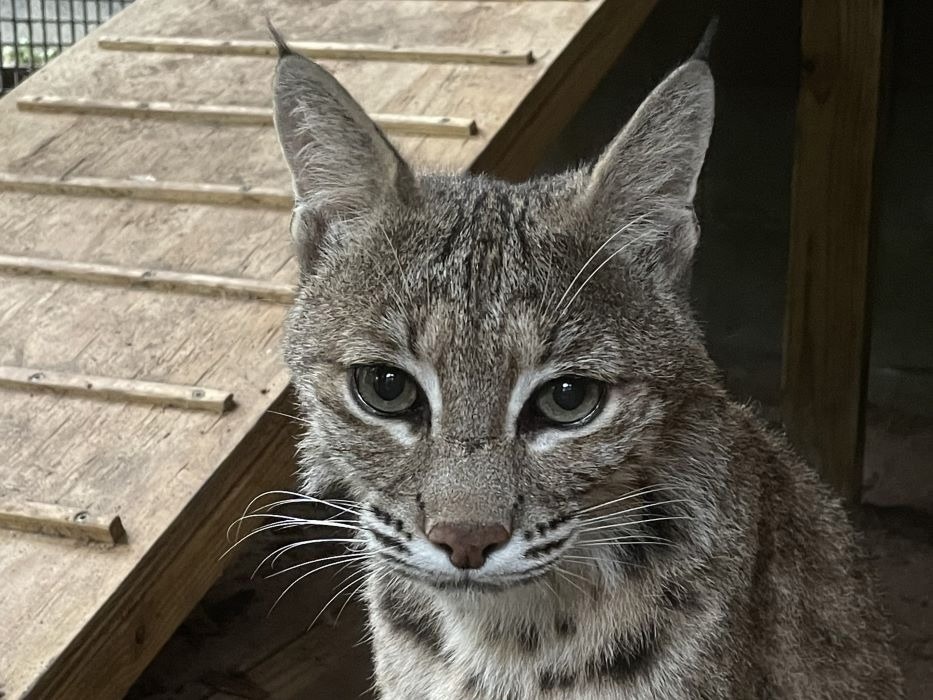Reviewed by Danielle Ellis, B.Sc.Jan 10 2024
On February 2021, Dave Duffy's children informed him on a Sunday morning that they had just witnessed a bobcat through their home's window, which was located close to the University of Florida's Whitney Laboratory for Marine Bioscience, which is located outside of St. Augustine, Florida.

Image Credit: Jessica Stull
They had assisted their father in collecting animal track samples on numerous occasions so that he might maybe research the animals that had left them, so they knew he would be curious.
Duffy was first dubious because bobcats are rarely seen in the open during the day. However, he eventually went to investigate and saw six distinct bobcat prints in the sandy ground. He collected little soil samples from the imprints with his children's assistance and stored them for later.
In their most recent study, Duffy and his team successfully extracted bobcat DNA from incidental tracks, showcasing the ease of retrieval. Through collaboration with the Jacksonville Zoo and Gardens, they demonstrated that DNA obtained from bobcat pawprints can unveil the animals' ancestral lineage and even pinpoint their distinct microbial makeup.
Remarkably, this information can be gleaned from the stray DNA remnants lingering long after the animal has departed the vicinity.
Scientists can save rare or endangered species, even bobcats and other creatures that are typically hard to follow, with the use of this kind of information. At the Whitney Lab, Duffy noted that the lab itself has encroached on the native bobcats’ range just as all development in the area.
Bobcats, like many other species, are experiencing changes in their ranges, mostly due to humans, being able to track where they are, what habitats they are using, and what areas they are in can help inform better management.”
Dave Duffy, Professor, Department of Biology, College of Liberal Arts and Sciences, University of Florida, Gainesville
In November, Duffy and the UF study team published their findings in the journal Biological Conservation. It is the most recent work produced by a group that has improved techniques for examining environmental DNA, or eDNA, the genetic debris that all living things leave behind when they travel through the environment.
This eDNA sequencing can be used to study human populations from entire towns using their wastewater, or it can be used to safeguard wildlife such as sea turtles. The ability to sequence every piece of DNA in the sample allowed the researchers to learn more about the bobcat's microbial ecosystem.
Since these bacteria have a direct impact on an animal's health, conservationists can learn even more about the wildlife populations they research by having a deeper understanding of the community.
As species become endangered or respond to climate change, their range can shift, and the distribution of pathogens is moving as well. If you can recover information about what microbes are associated with your species of interest, you can assess whether they are microbes with positive benefits or detrimental pathogens, and you might be able to tell if a wild population is healthy or not without having to ever see or interact with individual animals.”
Dave Duffy, Professor, Department of Biology, College of Liberal Arts and Sciences, University of Florida, Gainesville
Working together with the Jacksonville Zoo and Gardens allowed the research to go to such depth. Access to the bobcat's enclosure was granted by the zookeepers, enabling Duffy's team to verify and adjust their methods for the prints of wild bobcats.
Additionally, because Abby's DNA matched that of bobcats in the Texas region, it was demonstrated that the zoo's bobcat, which had been seized as an illegal pet, was probably descended from a southern American population.
While you can do some interesting analysis with one set of wild samples, you really need more than that to test these things rigorously. If it were not for our collaborators at the Jacksonville Zoo, we would have had only one set of samples to trial these techniques on.”
Dave Duffy, Professor, Department of Biology, College of Liberal Arts and Sciences, University of Florida, Gainesville
Also, the researchers proved that they could differentiate between samples taken from Canada lynxes, which are closely related to bobcats, and bobcat samples. Because the ranges of bobcats and lynxes overlap in the northern United States, scientists may be able to investigate each species independently with the use of techniques that distinguish one species from the other. This may not be possible with just traces.
In a subsequent investigation, the bobcat print samples enabled the researchers to demonstrate that the length of time that eDNA remains in the environment varies based on its original location within the cell. These data will aid in the interpretation of future eDNA results by scientists.
Duffy concluded, “Because these eDNA techniques are non-invasive, you do not have to intrude upon the species you are studying; that makes them really beneficial to scientists studying endangered species and the species themselves.”
Source:
Journal reference:
McCauley, M., et.al. (2024) Multicellular species environmental DNA (eDNA) research constrained by overfocus on mitochondrial DNA. Science of the Total Environment. doi.org/10.1016/j.scitotenv.2023.169550